There are two main ways to make the long journey from Cusco to Puno — the train and the bus — and both take about 10 hours. But when you get car sick (which makes the bus a tough option) and your schedule is tight (the train doesn’t run every day), sometimes you have to get creative. That’s how we found ourselves driving the Route of the Sun to Puno, the town that serves as the jumping off point for Lake Titicaca in Peru.
After an early breakfast at our hotel, the Casa San Blas, we headed out of Cusco for a quick stop in the appropriately-named “bread town,” just past Tipon. We pulled the van over and were immediately surrounded by vendors all trying to sell us huge round loaves of bread for pennies. We purchased a giant loaf and shared it with our Kuoda driver and guide. Delicious!
As we started to climb up the valley, we stopped at an overlook above the vista and the lake below. Near the shores of the lake, there was a make-shift camp of people living in tents. The rains of the winter that washed out the trains to Machu Picchu devastated the lands, and many of the people who lost their homes took up residency there.
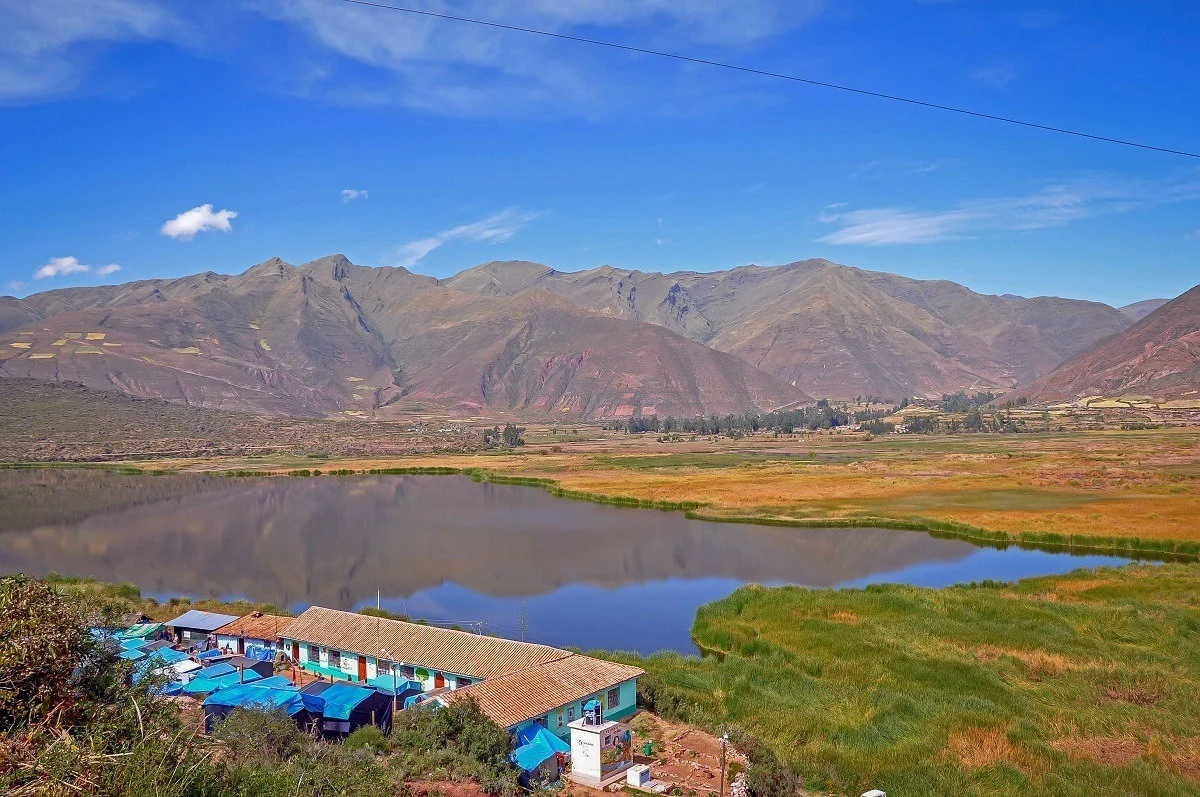
Over the course of our nearly eight-hour drive, we had several different stops at archeological sites and in little towns.
Archaeological Park of Pikillaqta
Pikillaqta is a pre-Incan development of the Wari peoples, which was used until about 1100. It may have been a site for banquets and ceremonies. The development was abandoned before it was complete (presumably because of a crisis in the Empire), and relatively little is known about it despite several excavations.
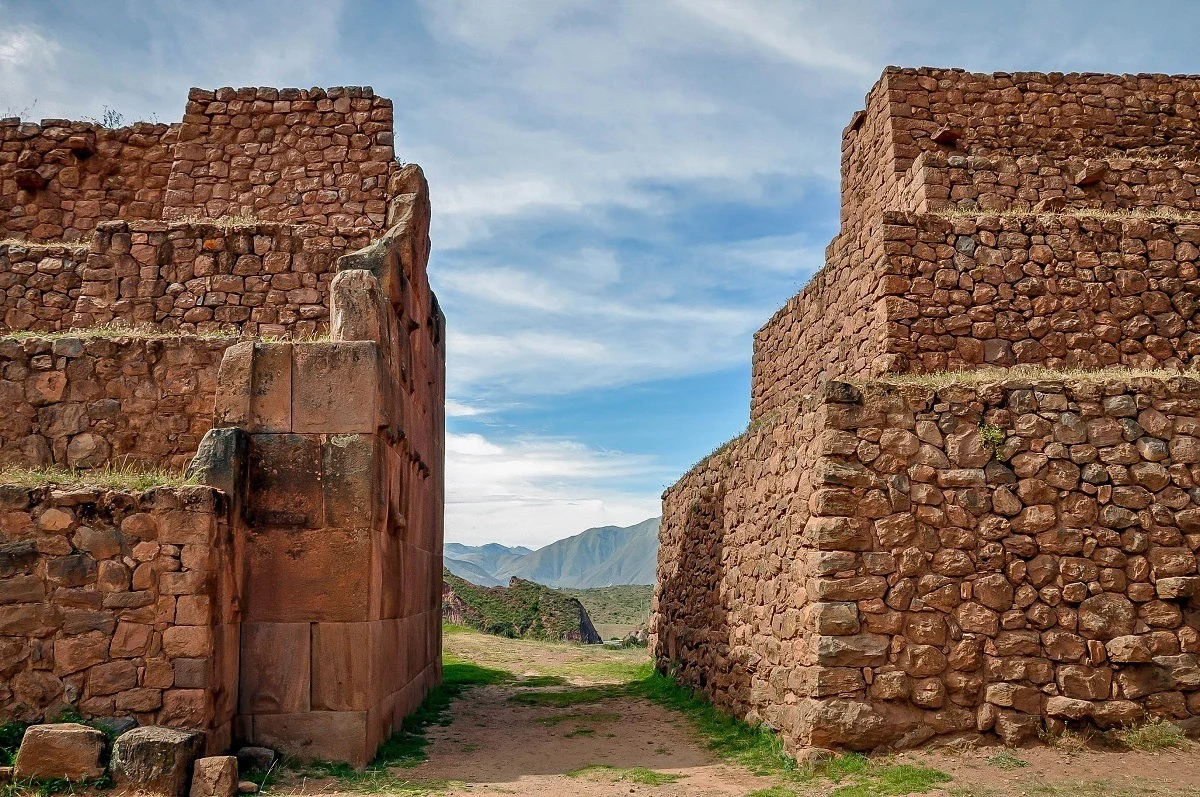
Church of San Pedro of Andahuaylillas
A short drive south from Pikillaqta is Andahuaylillas. The church in this small town was built in the 16th century by Jesuits, with the current church nave and façade being completed around 1606. The Church of San Pedro is considered by many to be the “Sistine Chapel of the Americas,” which is a little bit of a stretch, although the murals and painted ceiling are beautiful.
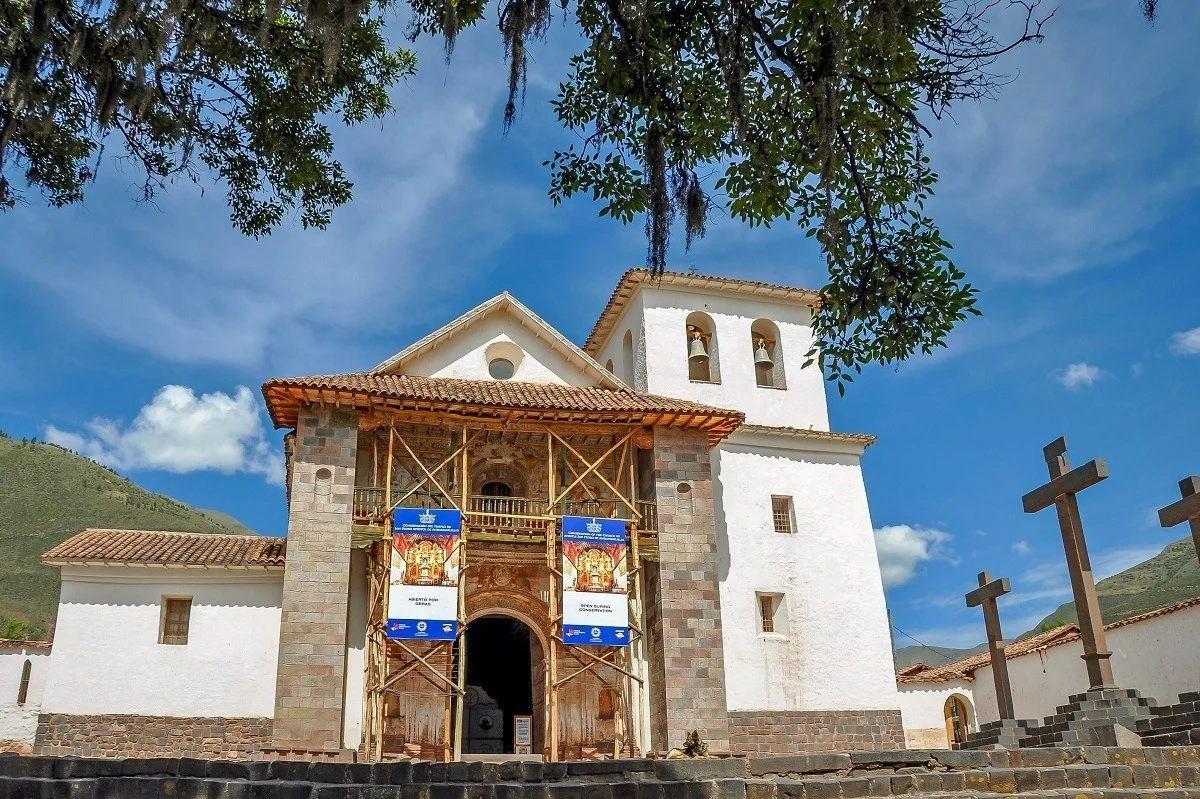
Archaeological Site of Raqchi
About two hours into the drive from Cusco to Puno, the ruins and the modern-day town of Raqchi lie along the Urubamba River. The archaeological site contains the remains of the massive Temple of Wiracocha – a huge, two-story temple over 300 feet in length that was dedicated to the supreme god of the Incas – as well as 200 storehouses made of stone.
Among the site and the storehouses were broken shards of pottery, some of it ancient. We were practically alone at the Raqchi archaeological site, so we had plenty of time to explore. Outside the ruins in the town of Raqchi, there is a gorgeous little church and courtyard. One part of the courtyard was filled with a market, but we just LOVED the little church.
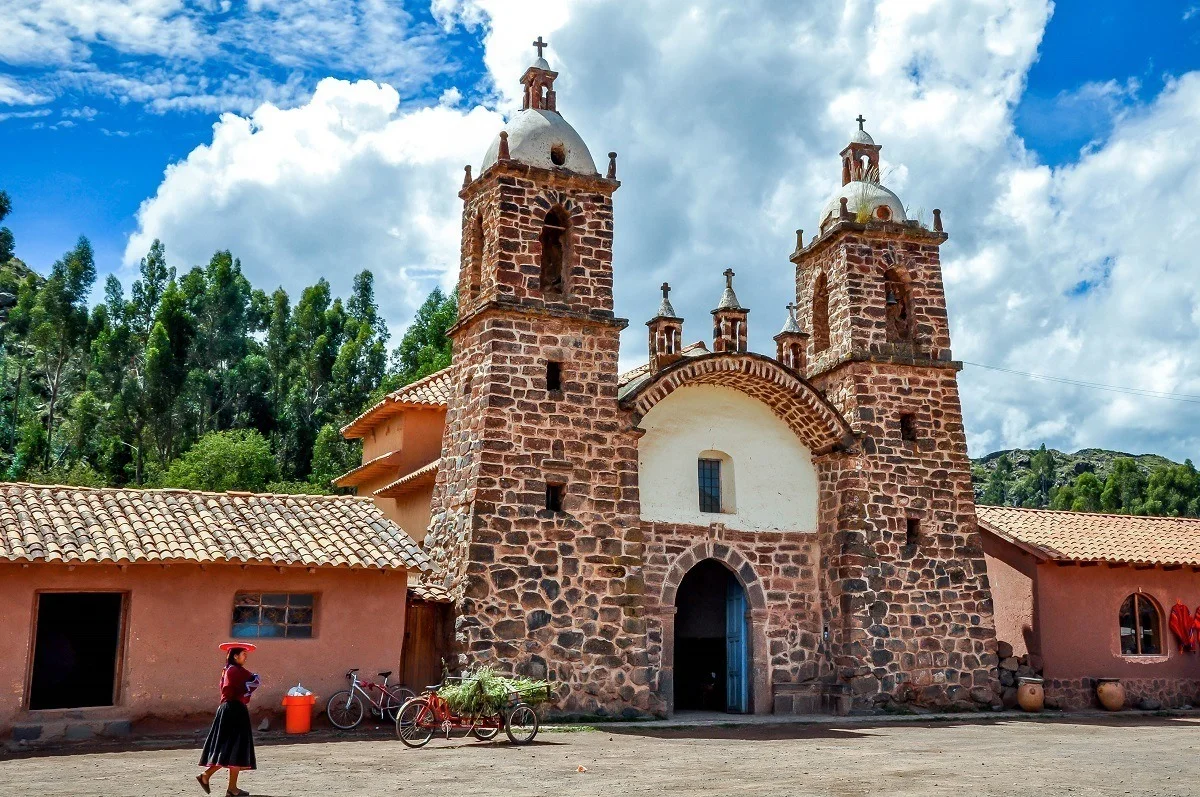
La Raya Pass
La Raya is the highest pass on the Route of the Sun, with majestic views in every direction. There is a beautiful little church in this lonely valley. The peaks and the glaciers tower over this stretch of the road. It was very cold, so we didn’t linger, which also helped us avoid some of the souvenir vendors who set up shop here.
Pukara (or Pucara)
This little hamlet about 100km from Puno was our last stop before we reached our destination. It is noted for its pottery as well as the archeological complex of Pukara. The Museo Litico de Pucara (Pucara Stone Museum) is small but has a nice collection of stone monoliths and some ceramics. (Given the long ride, it also has a bathroom, which we desperately needed).
After going to the museum, we hiked up to the 6000-year-old archaeological site at the base of the mountain/hill behind the town. There really wasn’t much to the complex, which had some pyramidal structure, but the site offered a view out over the valley and large church down in the town. As we started to walk back down towards the museum, we watched as the dark clouds gathered out over the plain.
Lance Longwell is a travel writer and photographer who has published Travel Addicts since 2008, making it one of the oldest travel blogs. He is a life-long traveler, having visited all 50 of the United States by the time he graduated high school. Lance has continued his adventures by visiting 70 countries on 5 continents – all in search of the world’s perfect sausage. He’s a passionate foodie and enjoys hot springs and cultural oddities. When he’s not traveling (or writing about travel), you’ll find him photographing his hometown of Philadelphia.


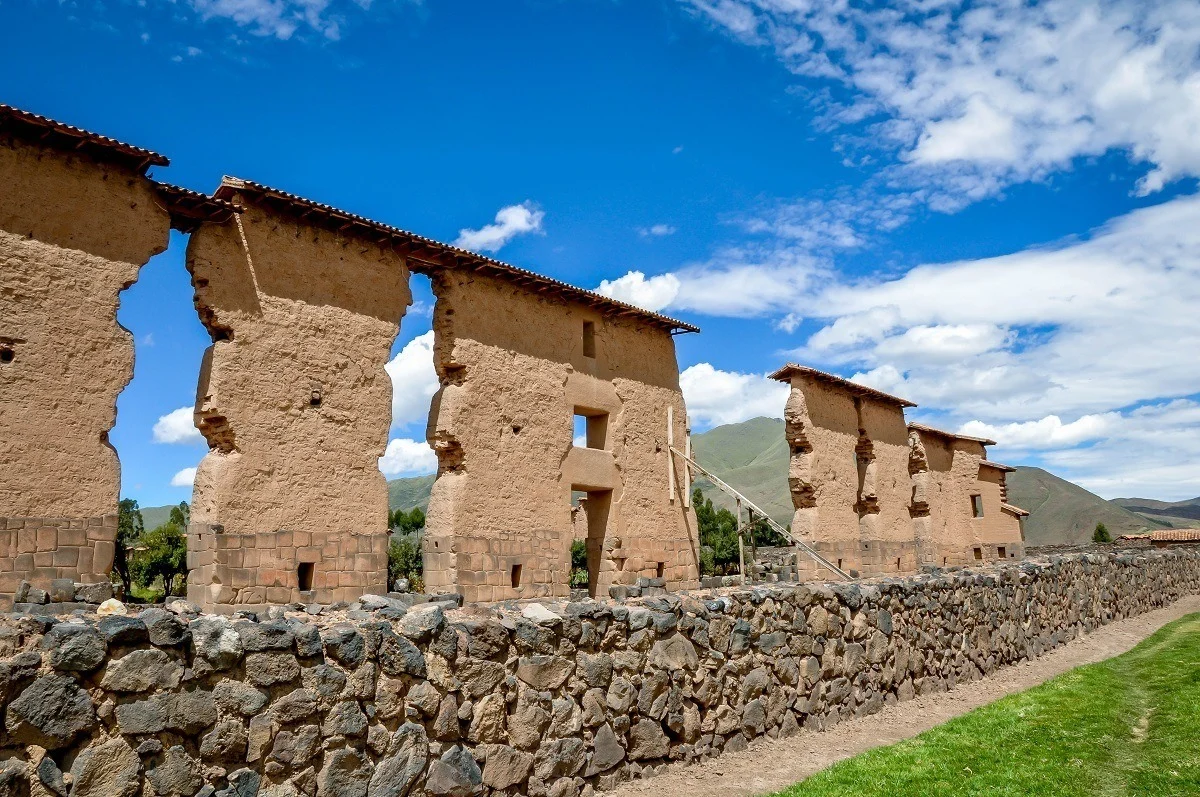
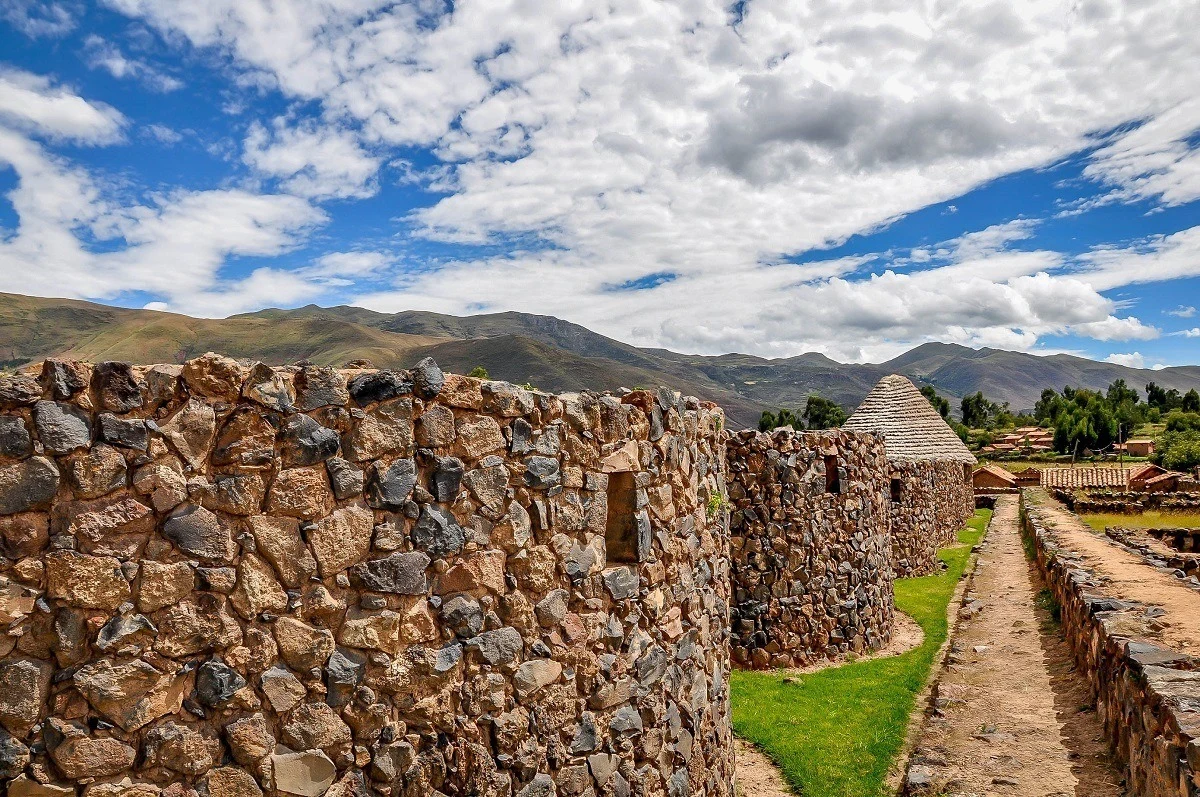
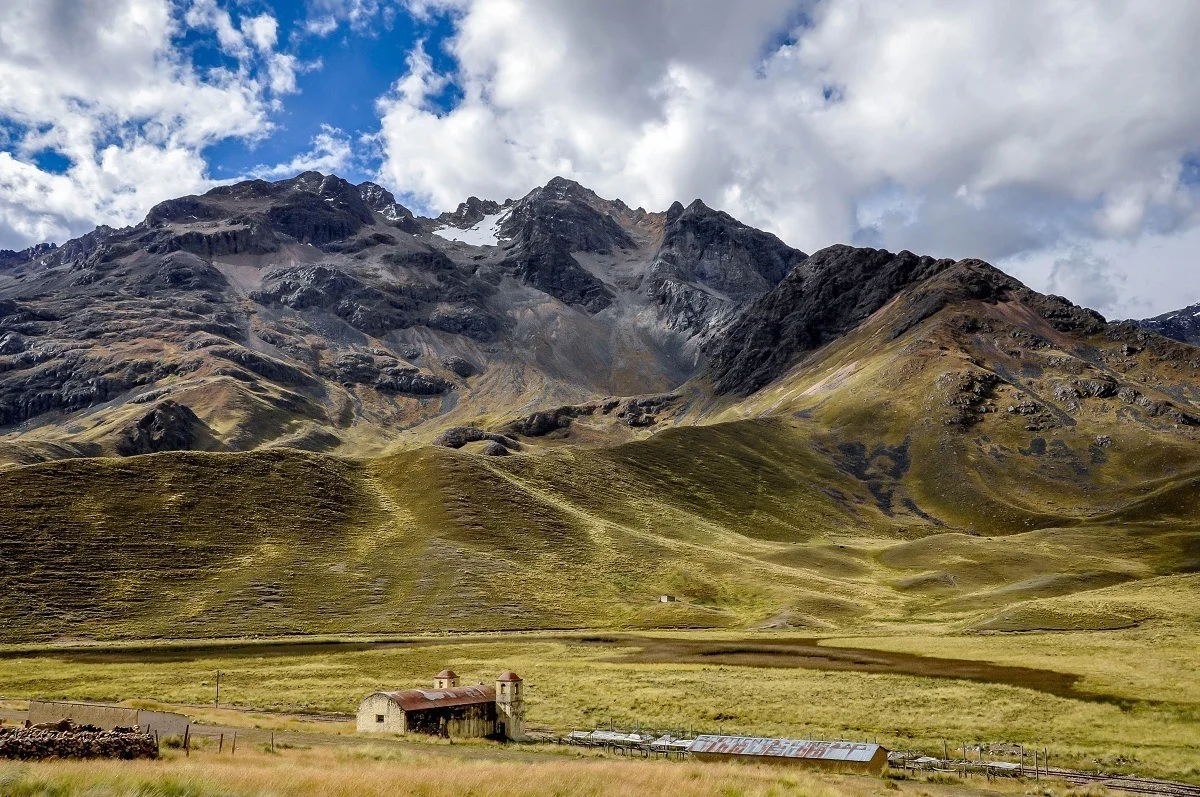
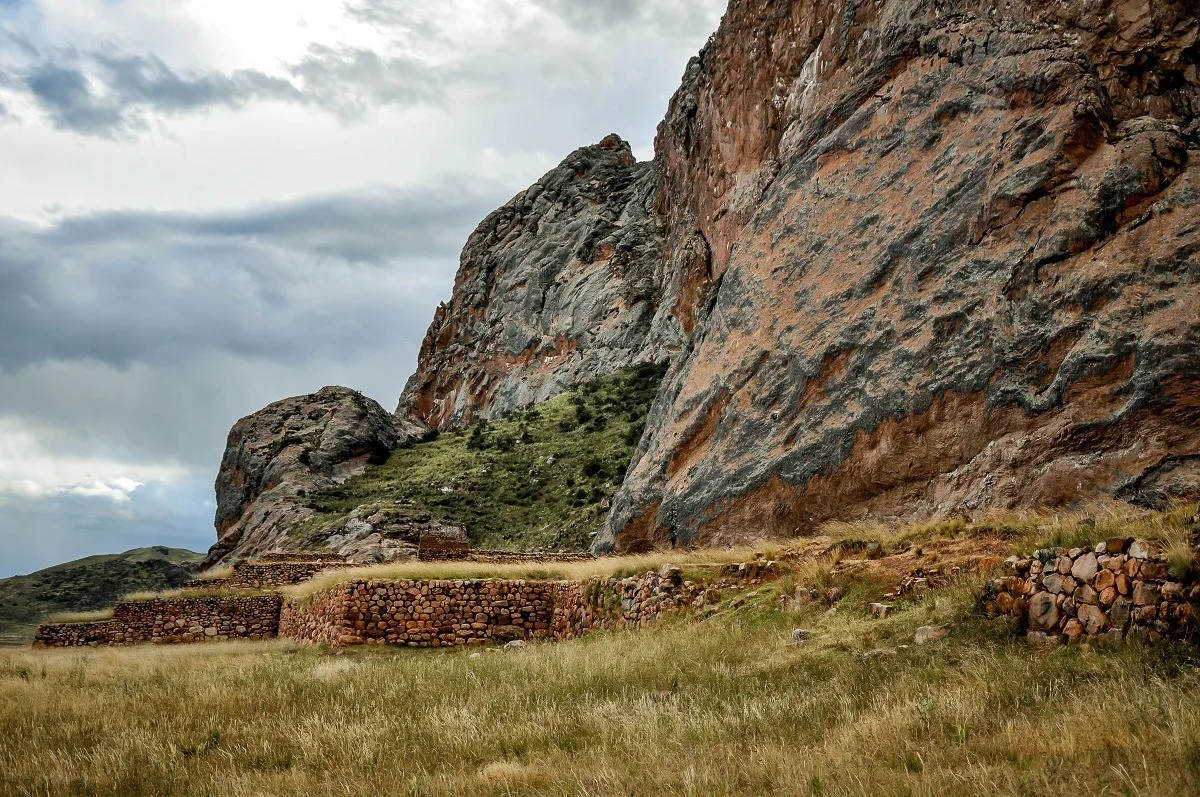
Andra
Wednesday 29th of March 2023
Thanks for your info! Could you tell me if the road winds and is on edge of cliffs (mountain passes often are)? We've driven in Italian mountains but unsure if good idea in Peru?
Lance Longwell
Tuesday 4th of April 2023
I don't recall any steep drop offs. It's really a high pass valley, not a steep one. I wouldn't have any concerns about driving it.
Stephen Kaufman
Monday 2nd of March 2020
Thanks for the helpful commentary.
What is the condition of the road between Puno and Cusco as we are considering using a van/driver gor our small group?
Lance Longwell
Monday 2nd of March 2020
It's been several years, but the road from Cusco to Puno was in reasonable shape. It's paved with one lane in each direction, but some potholes and frost heaves. We had a driver in a small van and it was no problem. Big buses also make the trip several times a day. It's a long drive (6-7 hours, plus stops), but very desolate and beautiful. Hope you enjoy the trip!